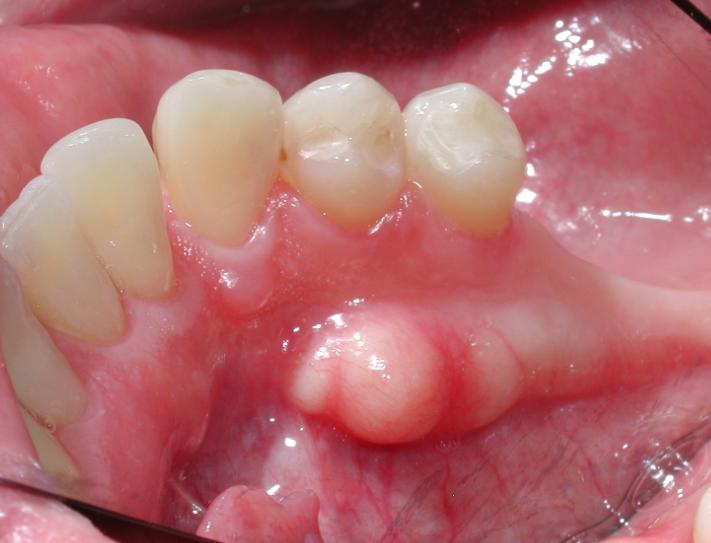
Newsletter Subscribe
Enter your email address below and subscribe to our newsletter

Enter your email address below and subscribe to our newsletter

Mandibular tori are benign bony growths on the lower jaw and are not cancerous. While their appearance can sometimes raise concerns, they are harmless. However, if you notice any changes, such as pain, growth, or unusual coloration, in the area of the tori, it's important to consult a dentist or doctor for evaluation.
Mandibular tori (singular: torus) are bony growths located on the inner side of the lower jaw (mandible), beneath and on the side of the tongue.
They are usually benign (non-cancerous) and often do not require treatment unless they interfere with the fit of dentures, cause discomfort, or are subject to frequent trauma.
The term “mandibular tori cancer” is not commonly used, as mandibular tori themselves are not cancerous.
Still, you may be referring to a situation where there’s a concern about cancerous changes or lesions developing in an area where mandibular tori are present.
Key Takeaways
In the early stages of oral cancer, including areas around the mandibular tori, symptoms might include:
These symptoms can also be caused by conditions other than cancer.
If you or someone you know is experiencing any of these symptoms, especially if they persist or worsen over time, consult a healthcare professional or a specialist in oral medicine or oral oncology for a thorough evaluation.
Early detection and treatment of oral cancers significantly improve the prognosis and the possibility of a successful treatment outcome.
Diagnosis of oral cancer, including in areas around the mandibular tori, typically involves a physical examination, review of the patient’s medical history, and may include biopsy procedures where a small sample of tissue is taken for laboratory analysis to determine if cancer cells are present.
Tori, plural for torus are benign boney growths found on the inside (tongue side) of the lower jaw or on the palate. When found on the lower jaw or mandible, they are called mandibular tori.
They are most often bilateral, on the right and left side. When found on the midline of the palate or roof of the mouth, it is referred to as a maxillary torus or torus palatinus. They can develop at any time, and will on occasion cause serious concern to those patients who are not aware of what they are and who mistake them for oral cancer.
While it is believed to be genetic, the cause of tori growth is not completely understood. They are composed of slow-growing bone and generally pose no problems for the patient. If injured, however, it can be very painful to eat or swallow.
They may pose a problem for patients who require dentures and surgical removal may be necessary. They are a hard bump or cluster of smaller bumps, light pink in color that vary in width and elevation but average about 1cm in elevation and 2cm in width or diameter.
Oral cancer is rare. Tori are far more common, found in 7-10% of Americans. Cancer is usually found in soft tissues such as the tongue or cheek. It is most often red in color and asymetrical, meaning it grows on one side of the mouth.
Cancer of the lower jaw may cause numbness of the lower lip or hard swelling of the lymph nodes under the angle of the mandible. Tori are painless unless injured, have no lymph node involvement and cause no numbness or tingling of the tongue.
Oral cancer refers to cancer that develops in any part of the mouth. It can occur on the lips, tongue, cheeks, floor of the mouth, hard and soft palate, sinuses, and pharynx (throat), and can be life-threatening if not diagnosed and treated early.
Here are some common signs and symptoms of oral cancer:
These symptoms can also be caused by other, less serious conditions. However, if you notice any of these symptoms persisting for more than two weeks, it is crucial to see a healthcare professional for a thorough examination and diagnosis.
Early detection of oral cancer significantly increases the chances of successful treatment.
The torus mandibularis is a bony growth in the mandible along the surface nearest to the tongue.
These growths are generally benign and often present no cause for concern, but they can be interesting from both a dental and an anthropological perspective.
Here are eight things to know about the torus mandibularis:
Do you want your torus mandibularus gone? Read more about Mandibular tori removal.
No, mandibular tori are not cancer. They are benign (non-cancerous) bony growths on the inner side of the lower jaw. Find out more about what is causing your mandibular tori: What causes a Bump on the Roof of Mouth?
Generally, no need to worry about mandibular tori as they are benign and usually don’t require treatment unless they cause discomfort or interfere with oral functions.
Mandibular tori typically do not alter your facial appearance negatively, as they develop inside the mouth along the jawbone.
Fact Checked
Our dedicated team rigorously evaluates every article and guide to ensure the information is factual, up-to-date, and free of bias.
Updated Regularly
We update our articles and reviews regularly to ensure you have access to the latest data in the dental industry.
The content on Dental3DU’s blog is intended for educational purposes only. This information should not be relied upon as professional medical counsel. Be sure to always consult with your dentist about the dangers and benefits of any medication, treatment or procedure.
Dental articles in your inbox. Subscribe